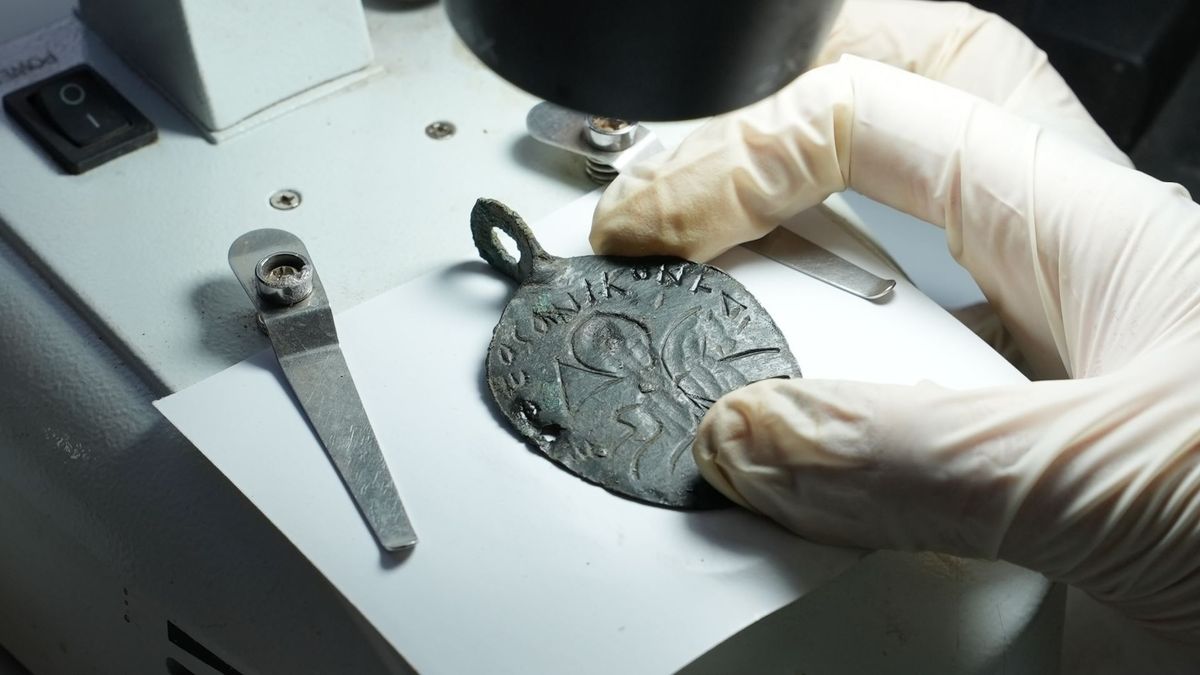Archaeologists in Turkey have uncovered a rare fifth-century Christian pendant depicting King Solomon on horseback spearing the devil. It’s the only pendant of its kind discovered in Anatolia, a region that covers much of modern-day Turkey, to date.
Both sides of the bronze pendant feature inscriptions in ancient Greek. The text on the King Solomon side translates to “Our Lord defeated evil,” while the other side names four angels: Azrael, Gabriel, Michael and Israfil.
“It is a symbol of religion and power,” Ersin Çelikbaş, an archaeologist at Karabük University in Turkey who oversaw the excavation, told Live Science. The pendant was used as an amulet, a charm that was thought to protect against evil or danger, Çelikbaş added in a translated statement.
According to the Hebrew Bible, King Solomon was a ruler of ancient Israel during the 10th century B.C., but there is little archaeological evidence to confirm the biblical account.
Though Çelikbaş is certain that the artifact is a Christian pendant, “Solomon is an important figure in all three holy religions,” he said in the statement. “While he is referred to as a ruler in the Torah and the Bible, he is also recognized as a prophet in Islam. The depiction of Solomon on this [pendant] surprised us and revealed the importance of the artifact for Anatolian archaeology.”
Related: Rare gladiator-shaped knife handle discovered by Hadrian’s Wall
Archaeologists uncovered the pendant during excavations at Hadrianopolis. This ancient city, originally called Uskudama, was likely inhabited by the Thracians — tribal people who inhabited parts of the Balkan Peninsula — before it was rebuilt around A.D. 124 by the Roman emperor Hadrian, who gave it its new name, according to Britannica. Today, the modern city is called Edirne.
The site of the ancient city is famous for its animal mosaics, and excavations have revealed baths, churches, fortifications, burials, a theater, villas and other structures, the statement said. The pendant was discovered in a building that might be related to military activity, although its function is still unknown, Çelikbaş told Live Science.
“In our previous excavations, we had determined the existence of a cavalry unit here,” he said in the statement. “Prophet Solomon is also known as the commander of armies. We understand that he was also considered as a protective figure for the Roman and Byzantine cavalry in Hadrianopolis.” In fact, Çelikbaş hypothesized that the pendant belonged to a cavalry soldier.
Based on the archaeological layer where they found the pendant, the archaeologists dated the artifact to the fifth century, when Hadrianopolis was part of the Byzantine Empire, he added. Emperor Constantine, who ruled a few centuries after Hadrian, later split the Roman Empire in two, leading to the creation of the Byzantine Empire in A.D. 330.
Although the pendant is the first of its kind discovered in Anatolia, Çelikbaş is aware of one previously found in Jerusalem. “The presence of similar artifacts in these two distant geographies indicates that Hadrianopolis was an important religious center in ancient times,” he said in the statement.
The pendant is now in his lab, and he will eventually hand it over to a museum to exhibit it.
